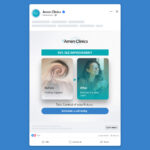Contents:
- Introduction: The Evolution of Internet Marketing
- Defining Internet Marketing: Beyond the Basics
- The Integral Role of Internet Marketing in Business
- Strategies to Attract and Retain Customers Online
- Content Marketing vs. Traditional Advertising: A Comparative Analysis
- 10 Proven Internet Marketing Techniques for Maximum ROI
- Crafting a Successful Internet Marketing Plan: Step-by-Step
- Conclusion: Embracing the Future of Digital Marketing
- FAQs: Demystifying Common Internet Marketing Queries
Introduction: The Evolution of Internet Marketing
Ten years ago, the term “internet marketing” might have conjured images of pop-up ads and email spam. Fast forward to today, and the landscape is unrecognizably transformed. But what drove this change?
The digital age has ushered in a new era where consumers are more connected, informed, and discerning than ever before. With the rise of smartphones, social media, and high-speed internet, the way businesses reach and communicate with their audiences has undergone a seismic shift. Gone are the days of one-size-fits-all advertising campaigns. In today’s hyper-connected world, businesses need to be agile, adaptive, and audience-centric.
Remember the time when billboards and TV commercials were the marketing gold standard? Now, they’ve been overshadowed by targeted online ads, influencer partnerships, and viral social media campaigns. The power has shifted from brands broadcasting their messages to consumers engaging in two-way conversations.
This evolution isn’t just about technology; it’s about a change in consumer behavior and expectations. Today’s consumers demand authenticity, value, and personalization. They’re not just passive recipients of marketing messages; they’re active participants, influencers, and brand ambassadors.
So, why does this matter to you? Because understanding the evolution of internet marketing is more than just a history lesson. It’s a roadmap to the future, a guide to navigating the digital landscape, and a playbook for building genuine, lasting connections with your audience.
In the coming sections, we’ll dive deeper into the intricacies of modern Internet marketing, equipping you with the knowledge and tools to thrive in this digital age. So, buckle up and get ready for a journey through the dynamic world of online marketing!
Defining Internet Marketing: Beyond the Basics
Have you ever wondered what truly lies at the heart of internet marketing? Sure, we’ve all heard the term thrown around, often interchangeably with digital marketing, online advertising, or e-marketing. But what does it mean in today’s digital age?
At its core, internet marketing is about connecting with potential customers in the right place and at the right time. And in today’s world, that place is online. But let’s not oversimplify things. It’s more than just putting up ads on Facebook or sending out a tweet. It’s a strategic blend of art and science, creativity and analytics, storytelling and data.
Think about it. When you search for a product on Google, what makes you click on one link over another? When you’re scrolling through your Instagram feed, what makes you stop and engage with a post? The answer lies in effective internet marketing.
So, what’s in the internet marketing toolbox? It encompasses a range of online tools and tactics, from your website to online branding assets — digital advertising, email marketing, online brochures, and more. It’s about leveraging these digital channels to connect with current and prospective customers.
But here’s the kicker: it’s not just about the tools. It’s about the strategy behind them. It’s about understanding your audience’s journey, from awareness to consideration to decision. It’s about delivering the right content to the right people at the right time, driving conversions, and building lasting relationships.
And in this digital era, where consumers are bombarded with information 24/7, standing out from the crowd is more challenging — and more crucial — than ever. It’s no longer enough to just “be online.” Brands need to be relevant, authentic, and engaging. They need to offer value, not just products.
To sum it up, internet marketing goes beyond the basics of online ads and social media posts. It’s a holistic approach to understanding and engaging with consumers in the digital space. As we delve deeper into this guide, we’ll uncover the strategies, techniques, and nuances that make internet marketing truly effective.
The Integral Role of Internet Marketing in Business
Picture this: A world where businesses and customers are seamlessly connected, where brands don’t just talk at consumers but converse with them. Sounds ideal, right? Well, welcome to the era of Internet marketing, where this vision is rapidly becoming a reality.
But first, a question. Why has Internet marketing become such a cornerstone in today’s business landscape? The answer is multifaceted, but at its heart, it’s about evolution and adaptation.
The Digital Shift: In today’s hyper-connected age, the internet isn’t just a luxury; it’s a necessity. With smartphones in every pocket and tablets in every bag, consumers are online more than ever. They’re researching, comparing, reviewing, and purchasing, all at the click of a button. For businesses, this means one thing: if you’re not online, you’re missing out.
More Than Just Sales: Sure, the end goal of any business is to drive sales. But internet marketing offers so much more. It’s a platform for storytelling, for building brand identity, for fostering community and loyalty. It’s a space where businesses can not only sell products but also share values, visions, and voices.
A Two-Way Street: Traditional marketing was largely one-directional. Brands broadcasted, and consumers listened. But internet marketing has flipped this dynamic on its head. Now, consumers have a voice, and boy, do they use it! They’re sharing reviews, posting feedback, and starting conversations. For businesses, this means an unparalleled opportunity to engage, to listen, and to adapt.
Data, Data, Everywhere: One of the most powerful aspects of Internet marketing is the wealth of data it provides. Every click, every share, every purchase — it’s all trackable, measurable, and analyzable. This means businesses can tailor their strategies with laser precision, optimizing for maximum impact and ROI.
The Bottom Line: In the grand scheme of business, internet marketing isn’t just another tool in the toolbox. It’s the foundation upon which modern businesses are built. It’s the bridge that connects brands with consumers, the platform that drives growth, and the strategy that ensures sustainability.
So, as we navigate the intricate web of online marketing, remember this: it’s not just about being present; it’s about being impactful. It’s about understanding the digital landscape, leveraging its strengths, and crafting strategies that resonate, engage, and convert.
Strategies to Attract and Retain Customers Online
Let’s set the scene: You’ve built a stellar website, your products are top-notch, and you’re ready to conquer the online world. But there’s a catch. In the vast ocean of the internet, how do you ensure that your brand doesn’t just become another drop in the water? How do you attract and, more importantly, retain customers?
Dive in with me as we explore the strategies that not only draw customers in but keep them coming back for more.
1. The Power of Paid Social Media:
- Think of social media as the bustling marketplace of the digital world. With the right investment, your brand can stand out, capturing the attention of potential customers. But remember, it’s not just about splashing the cash. It’s about targeting the right audience, crafting compelling content, and ensuring that every penny spent delivers maximum ROI.
2. SEO:
- The Unsung Hero: In the world of online marketing, SEO is often the unsung hero. It’s the force that drives organic traffic, ensuring that when potential customers search for products or services, yours are front and center. From keyword optimization to quality backlinks, a robust SEO strategy is the foundation of online visibility.
3. Building Brand Loyalty in the Digital Age:
- Gone are the days when brand loyalty was solely built on product quality. Today, it’s about the experience, the engagement, the value. It’s about creating a community, fostering two-way communication, and ensuring that customers feel heard, valued, and appreciated.
4. Content is King:
- But not just any content. Quality, relevant, and value-driven content. Whether it’s blog posts, videos, or infographics, the content you produce should resonate with your audience, addressing their needs, answering their questions, and positioning your brand as a trusted authority.
5. Email Marketing: The Comeback Kid:
- Once written off as outdated, email marketing has made a roaring comeback. With personalized campaigns, segmented lists, and compelling CTAs, it’s a powerful tool to drive conversions, nurture leads, and build lasting customer relationships.
6. A/B Testing:
- The Key to Optimization: In the world of Internet marketing, there’s no one-size-fits-all. What works for one brand might not work for another. That’s where A/B testing comes in. By testing different strategies, designs, and content, you can determine what resonates most with your audience, optimizing for maximum impact.
7. User Experience (UX) Matters:
- A seamless, intuitive user experience can be the difference between a one-time visitor and a loyal customer. From website design to navigation, every touchpoint should be optimized for user satisfaction.
8. Engage, Engage, Engage:
- In the digital age, engagement is currency. Through social media polls, interactive content, and feedback loops, foster a sense of community and ensure that your customers feel like an integral part of your brand’s journey.
Content Marketing vs. Traditional Advertising: A Comparative Analysis
Imagine standing at a crossroads. On one side, there’s the tried-and-true path of traditional advertising, with its billboards, TV commercials, and radio spots. On the other, the dynamic and ever-evolving world of content marketing, with its blogs, videos, and social media campaigns. Which path do you choose?
Let’s embark on a journey to dissect the strengths, weaknesses, and unique offerings of both, ensuring you make an informed decision for your brand.
1. The Essence of the Approach:
- Traditional Advertising: It’s direct, it’s loud, and it’s clear. Think of it as a megaphone, broadcasting a brand’s message to a broad audience. The aim? Immediate recognition and quick conversions.
- Content Marketing: Subtler and more nuanced. It’s less about shouting and more about conversing. It’s about offering value, building relationships, and establishing trust over time.
2. Reach and Targeting:
- Traditional Advertising: Casts a wide net. While it reaches a vast audience, it’s often less targeted, meaning a significant portion of the audience might not be your ideal customer.
- Content Marketing: Precision is the name of the game. With detailed audience segmentation and targeted content, it ensures that the message reaches those who truly matter.
3. Cost and ROI:
- Traditional Advertising: Often comes with a hefty price tag. While it can offer a significant short-term boost, measuring its long-term ROI can be challenging.
- Content Marketing: Typically more cost-effective in the long run. With the right strategy, it offers sustained engagement and a higher long-term ROI.
4. Flexibility and Adaptability:
- Traditional Advertising: Once a billboard is up or a TV commercial is aired, changes are costly and time-consuming.
- Content Marketing: The digital realm offers agility. Content can be tweaked, optimized, and adapted in real time based on feedback and analytics.
5. Engagement and Relationship Building:
- Traditional Advertising: It’s a one-way street. Brands talk, and consumers listen.
- Content Marketing: Fosters a two-way conversation. It’s about engaging with the audience, understanding their needs, and building a community.
6. Longevity and Impact:
- Traditional Advertising: Has a limited shelf life. Once the ad campaign ends, its impact starts to wane.
- Content Marketing: The gift that keeps on giving. Quality content can drive traffic, engagement, and conversions for years to come.
In the grand scheme of things, both content marketing and traditional advertising have their merits. The key is to understand your brand’s goals, your audience’s preferences, and the landscape of your industry. It’s not always about choosing one over the other but finding the right balance to maximize impact.
10 Proven Internet Marketing Techniques for Maximum ROI
Step into the digital arena, and you’ll quickly realize it’s a battleground. Brands vying for attention, algorithms constantly shifting, and consumers becoming ever more discerning. In this dynamic landscape, how do you ensure that your marketing efforts don’t just resonate but also deliver a tangible return on investment?
Join me on a deep dive into ten proven techniques that have consistently demonstrated their prowess in driving maximum ROI in the realm of internet marketing.
1. Website Content and Design: Crafting Compelling Narratives
Your website is your digital storefront. Ensuring it’s not only visually appealing but also filled with engaging, relevant content is paramount. Remember, first impressions count and a well-designed website can be the difference between a fleeting visit and a lasting relationship.
2. Email Marketing: The Art of Personalized Communication
Think email is passé? Think again. With tailored campaigns, segmented lists, and captivating content, email marketing remains a potent tool to nurture leads, drive conversions, and foster loyalty.
3. Social Media: Building Bridges and Communities
It’s not just about posting; it’s about engaging. Harness the power of social platforms to connect with your audience, share your brand story, and foster a sense of community. Remember, genuine engagement translates to genuine loyalty.
4. SEO: The Beacon in the Digital Fog
In the vast expanse of the internet, SEO ensures your brand stands out. By optimizing for relevant keywords, enhancing site speed, and building quality backlinks, you can ensure your brand is visible, accessible, and authoritative.
5. Blogging: The Heartbeat of Digital Presence
Regular, quality blog content establishes your brand as a thought leader, drives organic traffic, and nurtures customer relationships. Dive into topics your audience cares about, and watch as they turn from casual readers to brand advocates.
6. Video and Podcasting: Storytelling for the Modern Age
The digital age is visual and auditory. Videos and podcasts offer a dynamic way to share your brand message, tell stories, and connect with your audience on a deeper level.
7. Online Advertising: Precision Targeting for Visibility
Pay-per-click, banner ads, sponsored content – the world of online advertising offers myriad ways to put your brand front and center. With detailed targeting and analytics, ensure every dollar spent maximizes impact.
8. Influencer Marketing: Collaborative Power for Extended Reach
In a world of digital word-of-mouth, influencers can amplify your brand message, reaching niche audiences and building trust through association.
9. Infographics: Simplifying Complexity
In an age of information overload, infographics offer a visually appealing way to convey complex data, insights, and narratives, ensuring your audience grasps and retains your message.
10. Sponsorships and Paid Promotions: Strategic Alliances for Brand Amplification
Collaborate with events, platforms, or personalities that resonate with your brand ethos. Through sponsorships and promotions, extend your reach and reinforce your brand identity.
In conclusion, the world of Internet marketing is vast and varied. But with the right techniques, a dash of creativity, and a sprinkle of strategy, brands can ensure they not only stand out but also achieve maximum ROI.
Crafting a Successful Internet Marketing Plan: Step-by-Step
Picture this: A ship setting sail without a compass, a map, or a clear destination. Sounds risky, right? That’s precisely what diving into the digital realm without a well-crafted internet marketing plan feels like. But fear not, for we’re about to embark on a journey to chart out a clear, actionable, and results-driven course for your brand.
Join me, as we navigate the intricate waters of internet marketing, crafting a plan that ensures smooth sailing and maximum ROI.
1. Repurposing Content for Diverse Platforms:
- One piece of content, multiple uses. Transform a blog post into infographics, videos, or podcasts. By repurposing, you maximize reach and resonate with diverse audience preferences.
2. Embracing Permanent Social Media Content:
- Stories are fleeting; posts are permanent. Ensure your brand’s core messages, values, and offerings have a lasting presence on your social platforms, driving consistent engagement.
3. Keyword Optimization for Targeted Reach:
- Dive deep into keyword research. Understand what your audience is searching for and tailor your content to meet those queries. It’s not just about traffic; it’s about relevant traffic.
4. Prioritizing Mobile Optimization:
- In a mobile-first world, ensure your website, ads, and content are optimized for mobile devices. Seamless navigation, fast loading times, and responsive design are the keys to capturing the mobile audience.
5. Consistent Blogging for Sustained Audience Engagement:
- Regular, quality content keeps your audience engaged, establishes authority, and drives organic traffic. Dive into topics that resonate, educate, and inspire.
6. Effective Email Marketing Campaigns:
- Personalize, segment, and engage. Craft email campaigns that speak directly to the recipient, offering value, insights, and actionable takeaways.
7. Encouraging Social Media Conversations:
- It’s a two-way street. Foster conversations, encourage feedback and engage with your audience on social platforms. Build a community, not just a follower count.
8. Leveraging Online Press Releases for Brand Visibility:
- Got news? Share it! Online press releases amplify your brand’s milestones, partnerships, and offerings, enhancing visibility and credibility.
9. Investing in Paid Social Media Campaigns:
- Precision targeting for maximum impact. Invest in paid campaigns to reach niche audiences, drive conversions, and achieve specific campaign goals.
10. Utilizing Pay-per-Click Advertising for Competitive Keywords:
- Be where your competitors are. Bid on competitive keywords to ensure your brand remains top-of-mind and top-of-search.
11. Harnessing the Power of Video Content:
- Show, don’t just tell. Create engaging, informative, and shareable video content that tells your brand story, showcases products, or offers tutorials.
12. Collaborating with Micro-Influencers for Niche Marketing:
- Big isn’t always better. Collaborate with micro-influencers who resonate with your brand ethos and reach niche, engaged audiences.
In the grand tapestry of Internet marketing, a well-crafted plan is a thread that ties everything together. It offers direction, clarity, and a roadmap to success.
Conclusion: Embracing the Future of Digital Marketing
As we stand on the precipice of the digital age, gazing into the vast expanse of possibilities, one thing becomes abundantly clear: the future of marketing is not just digital; it’s dynamic, disruptive, and decidedly customer-centric.
But what does this mean for brands and marketers? It’s a call to action, a nudge to evolve, and a challenge to innovate.
The Continuous Evolution: The digital realm is akin to shifting sands. What’s relevant today might be obsolete tomorrow. Algorithms change, platforms rise and fall, and consumer behaviors evolve. But amidst this flux, the brands that truly thrive are those that remain agile, adaptive, and audience-focused.
Staying Ahead in the Game: It’s not just about keeping up with the latest trends or jumping on the newest platform. It’s about foresight, strategic planning, and a deep understanding of your audience. It’s about crafting narratives that resonate, creating experiences that engage, and building relationships that last.
The Power of Authenticity: In a world inundated with information, authenticity is the beacon that guides consumers. Brands that are genuine in their communication, transparent in their operations, and consistent in their values will invariably stand out.
The Role of Technology: From AI-driven content recommendations to VR shopping experiences, technology is reshaping the very fabric of digital marketing. Embracing these advancements, while ensuring the human touch remains intact, is the key to future success.
In essence, as we wrap up this deep dive into the world of internet marketing, remember this: The future is not to be feared but embraced. It’s an opportunity to redefine, reimagine, and reinvent.
FAQs: Demystifying Common Internet Marketing Queries
Dive into the world of internet marketing, and you’re bound to surface with a myriad of questions. It’s a realm that’s vast, varied, and at times, a tad vexing. But fret not, for we’re here to shed light on some of the most pressing queries that often leave marketers and brands scratching their heads.
1. What exactly is internet marketing?
- At its essence, internet marketing is the art and science of promoting products, services, and brands through digital channels. It encompasses a range of strategies and tools, from SEO and PPC to content marketing and social media. Think of it as the digital counterpart to traditional marketing but with added agility, precision, and engagement potential.
2. Can you provide examples of successful Internet marketing campaigns?
- Absolutely! From Nike’s empowering “Just Do It” campaigns that leverage influencer partnerships and viral videos to Airbnb’s user-generated content campaigns that showcase real travel stories, the digital realm is brimming with success stories. The common thread? Authenticity, creativity, and a deep understanding of the target audience.
3. What are the different types of internet marketing?
The digital marketing umbrella is vast. It includes:
- Search Engine Optimization (SEO): Enhancing online visibility through organic search results.
- Pay-Per-Click (PPC): Paid advertising where advertisers pay for each click on their ads.
- Content Marketing: Creating and distributing valuable content to attract and engage an audience.
- Social Media Marketing: Using social platforms to promote products, services, and brand messages.
- Email Marketing: Engaging and nurturing leads through personalized email campaigns.
- Affiliate Marketing: Earning commissions by promoting other company’s products.
- Online PR: Managing a brand’s online reputation and media relations.
4. Why is Internet marketing essential for modern businesses?
- In today’s digital age, consumers are online more than ever. They research, compare, shop, and engage online. For businesses, this means a golden opportunity to reach, engage, and convert. Internet marketing offers precision targeting, measurable results, and unparalleled engagement potential, making it a cornerstone of modern business strategy.
5. How do I measure the success of my internet marketing efforts?
- Welcome to the world of analytics! Platforms like Google Analytics, Facebook Insights, and various marketing software offer detailed data on campaign performance. From tracking website traffic and bounce rates to monitoring social engagement and conversion rates, these tools provide insights that help brands optimize and refine their strategies for maximum impact
Sources:
- Six Benefits of Internet Marketing – Small Business – Chron.com https://smallbusiness.chron.com/six-benefits-internet-marketing-31382.html
- The Importance of Internet Marketing – Marketing House Media https://marketinghousemedia.com/the-importance-of-internet-marketing/
- 10 Reasons Internet Marketing is Important for the Success of any Business – Adeo Marketing http://www.adeomarketing.com/news/10-reasons-internet-marketing-is-important-for-the-success-of-any-business.aspx
- 7 Reasons Why Internet Marketing Is Important For Your Business – TIS https://www.tisdigitech.com/blog/why-internet-marketing-is-important-for-business/
- Importance of Internet Marketing In the Modern World – LinkedIn https://www.linkedin.com/pulse/20140705001320-37732097-importance-of-internet-marketing-in-the-modern-world






